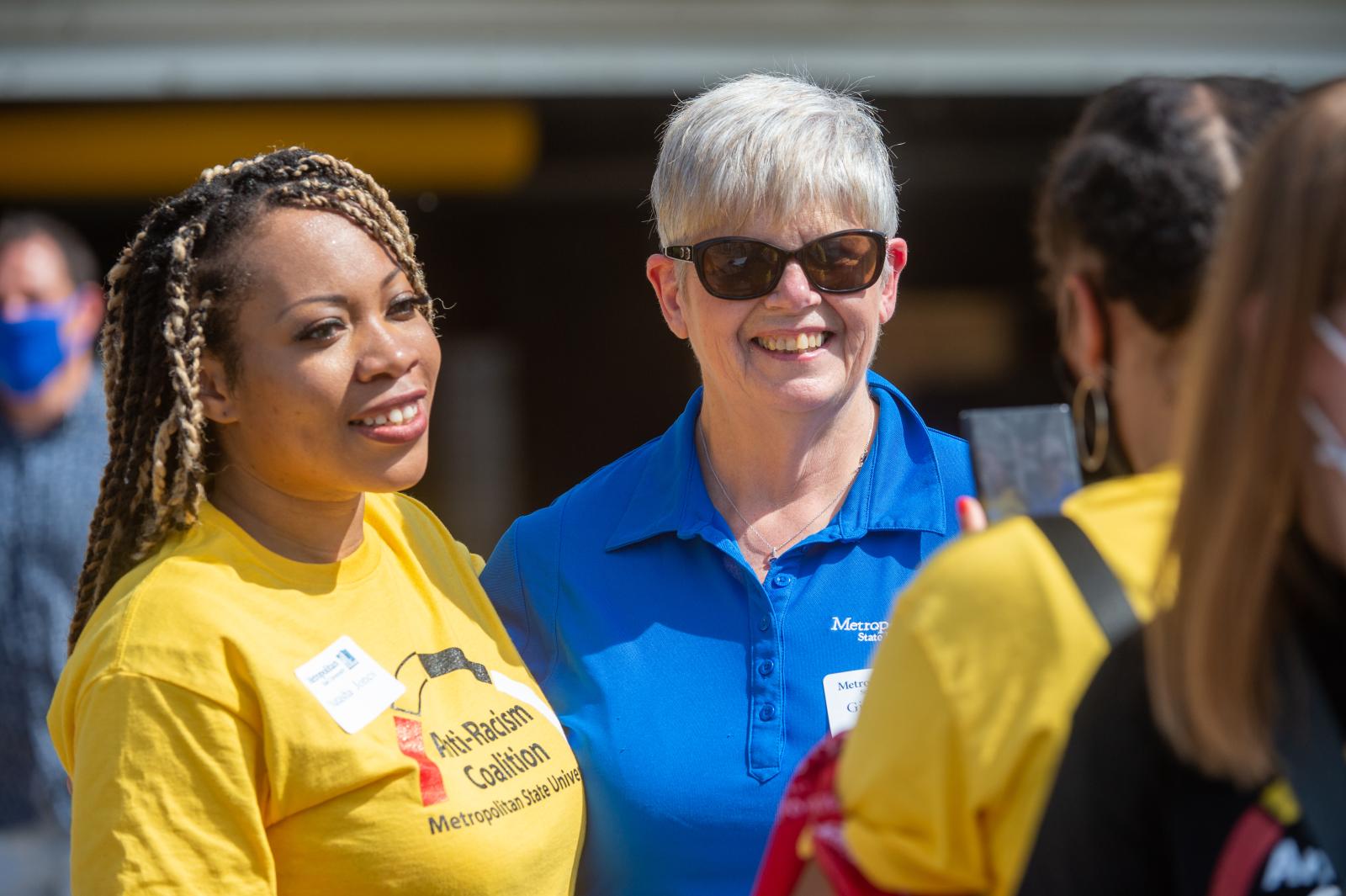
Register now! Spring semester starts January 12.
Metro State student services are available remotely/virtually December 29–31, and January 2. Campus buildings will be closed during this time. The university will be fully closed with no service on Thursday, January 1 for the New Years holiday. We hope you enjoy your winter break!
Equity by Design is a data-informed, equity driven strategy that aims to illuminate academic equity gaps impacting under-represented and marginalized university students.
This is work is nested under the system’s organizing principle of Equity 2030 and Metropolitan State University’s strategic priorities.
More importantly, Equity by Design focuses on realizing the following outcomes:

In order to implement Equity by Design at the campus level, Metropolitan State University has built a diverse campus coalition to help operationalize the overall approach and ensure that activities conducted under Equity by Design are responsive to the context of the university and its stakeholders.
The campus team is inclusive of the following roles:
The campus team is co-chaired by the Vice President of Equity and Inclusion and Associate Provost for Student Success. This team is charged with conducting capacity building and data analysis activities that will facilitate the process of systematically identifying equity gaps across student groups. In addition, the campus team acts as a coalition of equity leaders and practitioners who will communicate about this effort to constituent group/s they represent.
Team members are asked to participate in the campus level meetings on a monthly basis in addition to attending the trainings that The Office of Equity and Inclusion at the system level will offer to support this on-going work. These trainings occur 1-2 times per semester and last about 90-120 min. All meetings and trainings are conducted virtually.
The role of faculty colleagues as part of this work is critical for its success. In order for the campus team to determine the appropriate approach to address educational disparities; we must do so in constant partnership with faculty. While Minnesota State has dedicated resources to faculty coordinators from its colleges and universities we want to ensure our campus strategy is responsive to the needs of faculty and inclusive of their expertise.
A more detailed outline of this work is included in the Equity by Design Toolkit however, while work began in Fall 2020 it is expected to continue through the next few academic years. Team members are invited to participate in ongoing appointments or groups may choose to switch appointees every academic year.
Equity 2030 is an approach to intentionally rethink the way Minnesota State and our colleges and universities operate on a day-to-day level. As institutions of higher education, our core mission is represented by teaching and learning. The Equity by Design methodology, therefore, addresses the central and most critical aspect of how we operate.
The work to support equity-minded campus practices, pedagogy, curriculum, and culture has been happening at Minnesota State colleges and universities for decades. Many faculty and staff have been tireless in their efforts to raise and refocus their institutions on addressing equity, on creating culturally responsive and reflective pedagogy, on supporting the needs of Black, Indigenous, Immigrant, and Students of Color, low-income and first-generation students, and additional populations historically prevented from achieving higher education success.
This work has been innovative and inspiring but has too often been limited to the walls of individual classrooms and programs. The Equity by Design methodology provides a way to expand that innovation at a systemic, sustainable level for faculty and staff to learn with and from each other in structured ways that can lead to seemingly small but practically significant changes in how our students experience their educational journeys.